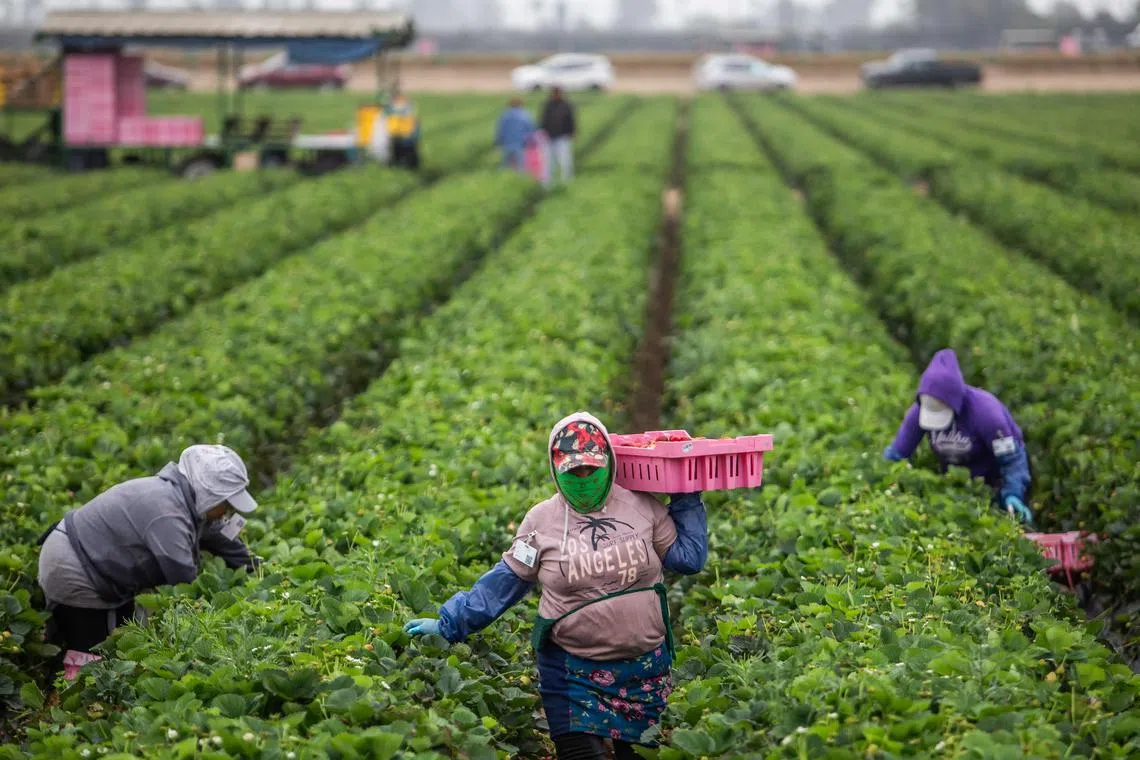Tariffs squeeze Trump-loving farmers as fertiliser prices soar
Sign up now: Get ST's newsletters delivered to your inbox

The squeeze highlights the financial strain on farmers – many of whom remain loyal Trump supporters – as they contend with depressed crop prices and ongoing trade disruptions.
PHOTO: AFP
Follow topic:
Fertiliser prices are surging, eroding American farmers’ profits and adding pressure on the Trump administration to slash tariffs on key crop nutrients.
Tightening supplies and tariff concerns have driven up costs for potash-, nitrogen- and phosphate-based products just as farmers are earning less for their harvests.
A North American benchmark of fertiliser prices recently surged to its highest level since at least 2016 relative to a basket of grain and oilseed futures – topping even the highs seen at the time of Russia’s invasion of Ukraine.
The United States gets the vast majority of its potash – used in the production of corn and soybeans, the nation’s two biggest crops – from Canada, whose supplies are mostly exempt from tariffs under the free trade agreement between the US, Mexico and Canada.
Levies still apply on overall fertiliser shipments from other producers, including Qatar and Saudi Arabia.
“Tariff uncertainty has certainly been a factor in driving fertiliser prices higher, even with exemptions carved out for most fertilisers,” Mr Daniel Cole, a Bloomberg Intelligence analyst, said by e-mail.
While other issues – including China’s decision to curb some exports and recent production outages in the Middle East – have also fuelled the rally, the fertiliser industry “has largely been in a state of confusion since the tariff rollout”.
The squeeze highlights the financial strain on farmers – many of whom remain loyal Trump supporters – as they contend with depressed crop prices and ongoing trade disruptions.
While the administration has stood firmly behind growers on key issues like biofuel-blending quotas, it has yet to address the rising concerns around affordability.
Cutting fertiliser import tariffs would offer “the fastest relief for farmers”, Republican Senator Chuck Grassley of Iowa said in a post on X earlier this week.
In a separate post, he said corn prices have fallen well below production costs as farmers prepare to harvest a record crop.
Tariffs have constrained shipments of phosphate and potash to the US, and are expected to “remain subdued” because of tariffs, producer Mosaic said earlier in August.
The Trump administration has taken steps to support higher domestic production of minerals including potash. The US Geological Survey this week proposed to include potash in a list of critical minerals – a further step in clearing the way for broader policy support.
The Fertiliser Institute, the industry’s lobby, has also been pushing for designating potash as a critical mineral in order to make a better case for tariff exemptions.
On Aug 26, Illinois Governor J. B Pritzker said a long-delayed project to produce a key nitrogen-fertiliser ingredient is moving forward after reaching a tax credit agreement with the state’s Department of Commerce.
The US$2 billion (S$2.6 billion) facility, which will be built by Cronus Chemicals, has been in the works for nearly a decade.
Meanwhile, CF Industries Holdings is teaming up with Jera, Japan’s largest power utility, and trading house Mitsui & Co to build the world’s biggest low-carbon ammonia plant.
The facility in Louisiana, which is expected to begin commercial production in 2029, will have an annual capacity of approximately 1.4 million metric tons. BLOOMBERG

